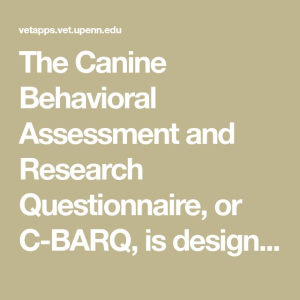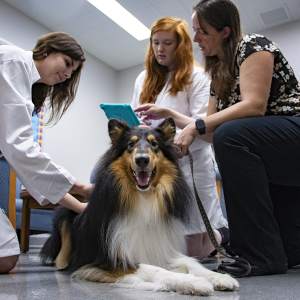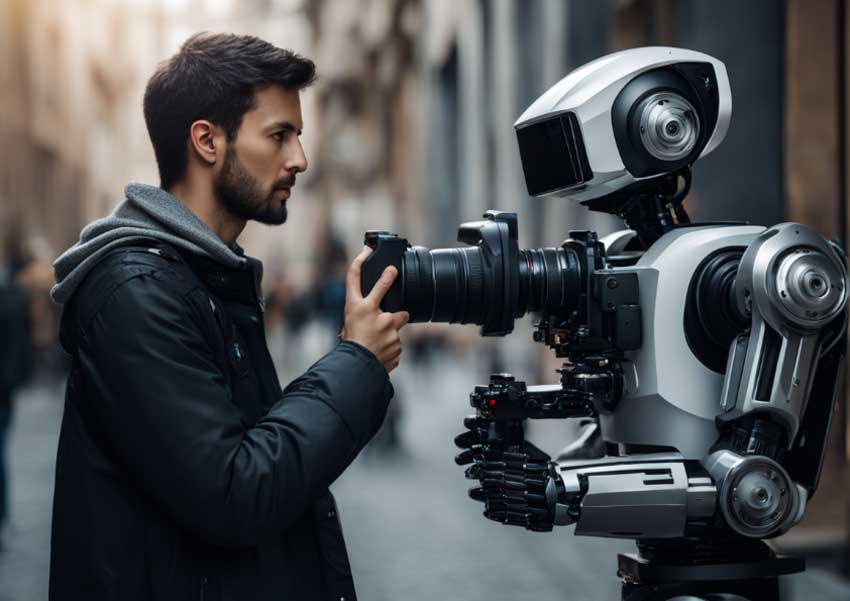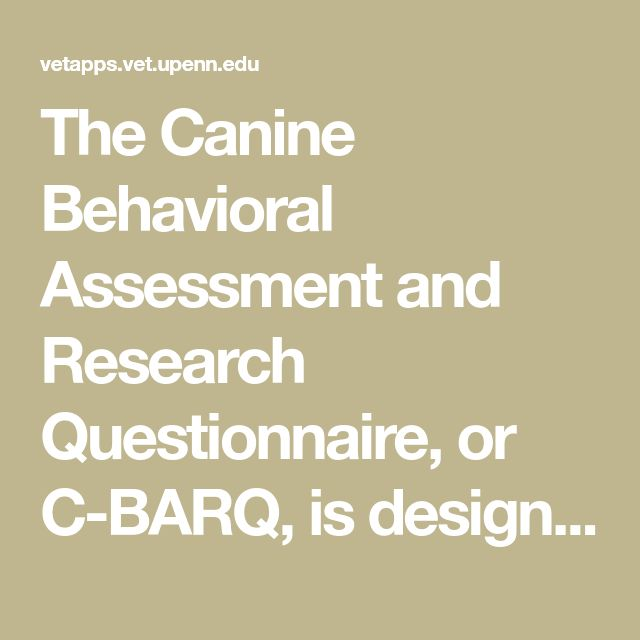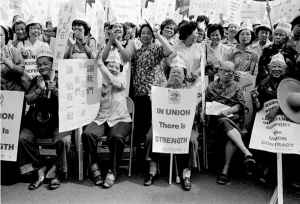AI in photojournalism is reshaping the landscape of visual storytelling, presenting both challenges and opportunities for the industry. As technologies evolve, they threaten to undermine the authenticity and trust that are foundational to photojournalism. However, innovative figures like Kira Pollack are harnessing artificial intelligence not only to navigate these complexities but also to preserve invaluable photo archives that document our history. Amidst the rising concerns over copyright issues and the reliability of synthetic images, Pollack’s research focuses on the potential of AI to safeguard the integrity of our visual records while revolutionizing how we access and understand them. This dynamic intersection of photojournalism technology and AI could redefine how future generations connect with the past, illuminating both the impact of AI on photography and the ongoing challenges that professionals face in maintaining the truth of their craft.
The integration of artificial intelligence into visual reporting is ushering in a new era of storytelling, with significant implications for how we capture and interpret images. This innovative approach involves leveraging advanced computational tools to systematically preserve and analyze the vast collections of professional photographers, especially in the context of documenting pivotal historical events. By exploring alternative methods, like employing machine learning algorithms, we can enhance our understanding of the narrative behind each photograph while safeguarding against the issues of misinformation and copyright infringement that plague the industry. As the field of photojournalism confronts the complexities of technology, the dialogue around its ethical use and implications becomes increasingly crucial. The future of visual journalism lies in thoughtfully balancing creativity, authenticity, and the preservation of our shared visual heritage.
The Role of AI in Evolving Photojournalism
The relationship between artificial intelligence and photojournalism is evolving rapidly, creating both challenges and opportunities for the industry. As Kira Pollack highlights, AI technologies can potentially transform how visual stories are crafted and preserved. While the rise of generative AI tools threatens the authenticity and trustworthiness of images in journalism, they also have the capacity to revolutionize the preservation of photo archives. By leveraging AI for organizing and cataloging images, photojournalists can safeguard their invaluable work, ensuring the historical context of important events is maintained.
Pollack’s experiments with AI aim to enhance the understanding and accessibility of photojournalism archives. She recognizes that while AI can analyze and interpret complex images, there are ethical concerns regarding its potential misuse. The challenge remains to strike a balance where AI can be employed to preserve the integrity of photojournalism while also addressing issues of copyright and authenticity. By focusing on the ethical use of AI, the industry can explore innovative methods to utilize this technology in a way that sustains the core values of visual storytelling.
Challenges Facing Photojournalism in the Age of AI
As Kira Pollack emphasizes, one of the most significant challenges for photojournalism today is the preservation of its archives. The vast amount of visual history captured by photojournalists is often at risk of being forgotten or lost due to the rapid pace of technological change and the overwhelming volume of new content generated by AI. The majority of images captured during notable events remain unpublished and underutilized, leading to a potential crisis in safeguarding our visual heritage.
Additionally, the concerns surrounding the influence of AI on image authenticity compound these challenges. Communities are increasingly wary of AI-generated images, raising questions about what is real and what is artificially crafted. This blurring of reality undermines the foundational trust photojournalists have built with their audiences. It is imperative for the industry to implement strategies that address these challenges, ensuring that archives remain a reliable testament to history while embracing the benefits of technological advancements.
Preserving the unique narratives contained within photojournalism archives is not just about the images themselves but also about the stories they represent. With AI technologies, there is an opportunity to add depth to these archives, cultivating a more immersive experience for viewers and scholars alike. By harnessing AI responsibly, photojournalism can continue to thrive in a complicated digital landscape and maintain its integral role as a historical record.
Preserving Photo Archives with Modern Technology
The preservation of photo archives is vital for ensuring that future generations have access to a rich visual history. Kira Pollack’s pioneering work aims to develop methods that utilize AI for cataloging and organizing these archives, making them more accessible and relevant. By digitizing and contextualizing archives, photojournalists can protect their life’s work from being lost in time. Leveraging AI technology can facilitate the discovery of long-forgotten images, offering fresh perspectives on historical events and enhancing their significance.
Furthermore, the integration of AI can significantly enhance the user experience. AI-driven tools that can intelligently sort and present images based on context not only allow for easier navigation of vast collections but can also encourage deeper connections between viewers and the stories behind the photographs. This approach transforms traditional perceptions of photo archives, breathing new life into old images and engaging the public with the pivotal moments captured by photojournalists.
The Impact of AI on Photography and Journalism
The impact of AI on the realms of photography and journalism cannot be overstated. As Kira Pollack perceives, while generative AI poses challenges, it also presents an unprecedented opportunity to foster creativity and innovation within the field. AI’s ability to analyze photographs can serve as a valuable tool for photojournalists, enhancing their storytelling capabilities and providing new insights into the layers of narrative embedded in their work. This shift towards embracing AI as a co-creator allows photographers to focus on the artistry of their craft while benefiting from advanced analytical tools.
However, concerns about the potential erosion of trust due to AI’s ability to create hyper-realistic images are valid. The risk of manipulated visuals becoming indistinguishable from authentic journalism raises ethical questions regarding authenticity and ownership. It is crucial for photojournalists to remain vigilant in understanding AI’s implications while forging new paths for ethical usage. By proactively addressing these challenges, the field of photography can harness AI’s potential to enhance credibility and preserve the artistry inherent in visual storytelling.
Ethics and Responsibilities in AI-Driven Photojournalism
With the rise of AI in photojournalism come significant ethical considerations that need to be addressed. Kira Pollack’s insights into the ethical deployment of AI in the preservation of photo archives highlight the importance of safeguarding an artist’s rights and the authenticity of their work. The fear that AI could exploit copyrighted images for training purposes without consent necessitates a critical examination of how these technologies are integrated into the journalistic process.
Navigating this ethical landscape requires collaboration between technologists, ethicists, and photojournalists to develop clear guidelines that respect authorship while leveraging AI’s capabilities. As the industry progresses, it is vital to establish a framework that upholds integrity, ensuring that AI serves as a tool for enhancement rather than exploitation. Promoting transparency in the use of AI technologies and encouraging ethical practices will ultimately strengthen the faith between photojournalists and their audience.
AI as a Tool for Enhancing Photographic Storytelling
AI’s potential as a tool for enhancing storytelling in photojournalism is a transformative prospect that Kira Pollack is keen to explore. By harnessing the power of AI to analyze complex images and extract meaningful insights, photojournalists can reveal layers of narrative that may not be immediately apparent to viewers. This capability not only enriches the storytelling process but also fosters a deeper understanding of the events captured through the lens, allowing audiences to engage more profoundly with visual media.
Moreover, AI can assist in drawing connections between different images, creating a cohesive narrative that encapsulates a broader context of historical events. By organizing and synthesizing vast amounts of visual data, AI can provide photojournalists with a richer canvas upon which to build their narratives. The result is a more nuanced representation of reality that honors the intent of the photographer while also embracing the potential of AI as a collaborative partner in storytelling.
Navigating the Future of Photojournalism in an AI World
As photojournalism continues to evolve in the AI era, Kira Pollack’s Shorenstein Fellowship serves as a pivotal platform for examining the future landscape of the industry. Engaging in dialogues with experts from various fields allows for a multifaceted exploration of how technology can align with the core principles of journalism, such as truth and integrity. Pollack seeks to understand the implications of AI while striving to protect and enhance the values of photojournalism.
The future of photojournalism is not solely about adapting to technological changes but redefining its mission in a rapidly evolving environment. By embracing innovative solutions and participating in critical discussions, photojournalists can proactively shape the narrative around AI and its role within their field. This forward-thinking approach will create pathways for sustainable growth and ethical practice, ensuring that the essence of photojournalism remains intact amidst the technological advancements.
Building Trust in AI-Based Visual Media
Trust is a cornerstone of photojournalism, and as AI becomes integrated into visual media, building and maintaining this trust becomes even more critical. Pollack’s exploration into how AI can be harnessed ethically seeks to counter the negative perceptions surrounding AI-generated content. By focusing on transparency in the use of AI and collaborating closely with photographers to preserve their legacies, the industry can work towards reinforcing the credibility of visual journalism.
Moreover, community engagement is essential in restoring trust among audiences. Photojournalists must communicate the ways in which AI assists their work without compromising authenticity, educating the public on the responsible use of technology. Establishing a clear line between AI-enhanced analysis and manipulated imagery can foster a dialogue that reassures audiences of the value and integrity of photojournalism, ultimately leading to a more informed public.
The Future of Photojournalism: Innovation Meets Tradition
The future of photojournalism lies at the intersection of tradition and innovation, where technologies such as AI can enhance traditional methods of storytelling. Kira Pollack’s focus on using AI ethically presents a framework for integrating new tools that can preserve the legacies of photojournalists while reinforcing the values that underpin the craft. As the industry looks towards the future, embracing both innovative solutions and traditional storytelling techniques will be crucial for maintaining relevance in an increasingly digital world.
An unwavering commitment to authentic representation will guide the evolution of photojournalism. By leveraging the latest technologies responsibly, photojournalists can enhance their work’s visibility and impact. It is this blend of innovation and tradition that will ensure the field not only survives but thrives in an era characterized by rapid change and digital proliferation.
Frequently Asked Questions
How is AI impacting photojournalism today?
AI is significantly impacting photojournalism by introducing challenges such as copyright concerns and the proliferation of synthetic images that blur the line between reality and fiction. As photographers work to maintain visual integrity, tools like Kira Pollack’s research are exploring ways to harness AI to help preserve vital photo archives and ensure the authenticity of photojournalism narratives.
What role does Kira Pollack see for AI in preserving photo archives?
Kira Pollack believes that AI has the potential to help preserve photo archives by cataloging, organizing, and contextualizing images. This technology can assist in unlocking vast collections of photojournalism that are at risk of being lost, allowing for a more dynamic and comprehensive understanding of historical events captured by photojournalists.
What challenges does AI present to the field of photojournalism?
AI poses several challenges to photojournalism, including the risk of copyright infringement, the creation of realistic fake images that can undermine trust in media, and ethical concerns about the unauthorized use of photographers’ work to train AI models. These challenges prompt the need for a careful balance in how AI is deployed in the industry.
Can AI help address the issues of trust in photojournalism?
While AI presents challenges, it can also play a role in reinforcing trust in photojournalism by providing tools to preserve authentic visual records. By focusing on the ethical use of AI to manage and safeguard photo archives, professionals like Kira Pollack aim to utilize technology to enhance the integrity of real photojournalism rather than to generate misleading content.
What are some potential benefits of using AI in photojournalism?
Potential benefits of using AI in photojournalism include improved organization and accessibility of photo archives, enhanced storytelling through better contextualization of images, and the ability to analyze complex visuals with greater accuracy. These capabilities can significantly contribute to preserving historical records and enriching the narrative of photojournalism.
How can AI help to contextualize images in photojournalism?
AI can help contextualize images in photojournalism by analyzing visual elements and providing insights about the content, emotions, and setting of the photographs. This can facilitate a deeper understanding of the stories behind the images, making the archives more engaging and informative for viewers.
What is the significance of Kira Pollack’s work at the Shorenstein Center?
Kira Pollack’s work at the Shorenstein Center is significant because it addresses the critical intersection of technology and journalism, particularly in how AI can be ethically harnessed to preserve the legacy of photojournalism. Her multifaceted approach seeks to engage with various stakeholders to explore the values of truth and integrity in visual storytelling.
How might AI transform the future of photojournalism?
AI might transform the future of photojournalism by creating new methods for archiving and accessing visual histories, fostering innovative approaches to storytelling, and assisting in the ethical management of copyrighted materials, thereby shaping how audiences engage with and trust journalistic content.
What measures should be taken to protect photographers in the age of AI?
To protect photographers in the age of AI, measures must include clear regulations on copyright and ownership rights, consent protocols for training AI models, and the promotion of ethical AI practices that prioritize the integrity of original photojournalistic work. Engaging in dialogue within the industry is crucial for establishing these standards.
How is the photography community responding to the rise of AI technology?
The photography community is responding to the rise of AI technology by educating itself on its implications, advocating for ethical guidelines, and exploring collaborative solutions that leverage AI tools for preserving authenticity while working towards maintaining the core values of journalism.
| Key Point | Details |
|---|---|
| AI’s Dual Role in Photojournalism | AI threatens traditional photography but also offers tools for preservation and organization of photojournalist archives. |
| Kira Pollack’s Work | As a Shorenstein fellow, she researches how AI can protect and contextualize the archives of photojournalists. |
| Archives as Living Histories | Pollack emphasizes archives as crucial visual records that must be preserved before AI distorts truth. |
| Challenges of AI in Journalism | Concerns include erosion of trust due to synthetic images and copyright issues surrounding AI training. |
| Experimentation with AI | Projects combine AI and real photojournalism to analyze images and contribute to understanding their context and complexity. |
| Future of Photography and AI | Pollack seeks to guide the photojournalism community in adapting to technological changes while preserving core values. |
Summary
AI in photojournalism represents a transformative moment where emerging technology risks undermining the credibility of visual media, yet also offers innovative solutions for preserving and organizing the rich historical archives of photojournalists. Kira Pollack’s initiative at the Shorenstein Center exemplifies the potential for AI to enhance the integrity of photojournalism, protect authorship rights, and safeguard the narrative power of photography in an era increasingly riddled with misinformation. As the photojournalism landscape evolves, it becomes crucial to harness AI responsibly, ensuring that it serves as a tool for transparency and truth rather than a means to blur reality.


